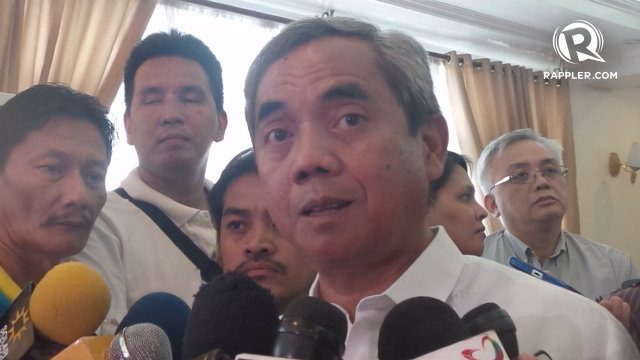SUMMARY
This is AI generated summarization, which may have errors. For context, always refer to the full article.

MANILA, Philippines – Seven months ago, in the days and weeks before Super Typhoon Yolanda (Haiyan) made landfall in the country, local chief executives were warned of its dangers.
But the problem, national government officials said, was that not everyone understood what exactly the warnings meant.
Getting lost in scientific translation proved to be fatal during Yolanda. Many Filipinos, unfamiliar and unaware of the effects of a storm surge, did not expect its wrath. According to the National Disaster Risk Reduction and Management Council (NDRRMC), the storm surge caused many deaths in Eastern Visayas.
As of its last count, 6,300 people died because of Yolanda. Close to 1,800 are still missing.
Speaking to reporters after the Wednesday, June 11, full council session of the NDRRMC, Department of the Interior and Local Government (DILG) Secretary Manuel Roxas II told reporters the council’s goal this year is to take scientific information and turn them into “actionable steps.”
“The most important thing to do here is to figure out how to convert scientific information into actionable steps for mayors and barangay officials. Our priority when we talk about disaster response is our local government unit (LGU) chief executives,” he added.
Roxas, as the DILG chief, is the NDRRMC vice chairman for disaster preparedness.
By “actionable steps,” the council means it will create a “template” for how various LGUs should respond to specific situations.
The full council session happened a day before state weather bureau PAGASA declared the start of the rainy season. The Department of Science and Technology (DOST) estimates around 18 typhoons to enter the country this year.
Understanding the signs
For instance, NDRRMC chief Undersecretary Alexander Pama told reporters, typhoons that pack strong winds will have different effects on a highly-urbanized city compared to more rural regions.
Warning systems and their corresponding response won’t be based solely on the strength of a storm.
“A signal number 1 storm will cause more damage in provinces than, let’s say, in Metro Manila because houses [here] are sturdier,” Pama, a former Navy chief, told reporters.
The “new system,” which Pama describes as a “more scientific approach,” will begin with pre-disaster risk assessment to be headed by the NDRRMC’s vice chairpersons.
Aside from Roxas, the NDRRMC’s vice chairpersons are: the social welfare and development secretary, for disaster response; the science and technology secretary, for disaster prevention and mitigation; and the National Economic and Development Authority secretary-general, for rehabilitation and recovery.
For the DILG, this means holding workshops for LGU officials. “So they understand what PAGASA’s warnings mean,” said Roxas.
PAGASA’s data, Roxas added, will later be matched with the hazard maps of the DOST and the Department of Environment and Natural Resources. The NDRRMC will then match that with the LGUs’ capacity or lack of it.
The year 2014 may prove to be trickier for the NDRRMC and the rest of government. The country is bracing for “what could be the worst El Niño in 17 years.” El Niño means erratic weather patterns. The last El Niño lasted from 2009 to 2010, during which Typhoon Ondoy flooded Metro Manila.
‘Streamlining systems’
Pama said that the council also discussed “gaps and good practices” from previous disasters.
The new NDRRMC chief inherits an agency heavily criticized for its handling of Yolanda. His predecessor, former NDRRMC chief Eduardo del Rosario, was called out for what was seen as the government’s slow response to the crisis. Critics also accused him of underreporting the typhoon’s death toll.
Pama said the NDRRMC’s focus is to build on and expand the capacities and resources of LGUs. It also means making the most of what ever resources are available.
After Yolanda, some LGUs found themselves with a surplus of things they didn’t need and a shortage of what they needed. “With the new system, we can be more specific in anticipating what can happen so that agencies can prepare better,” said Pama. – Rappler.com
Add a comment
How does this make you feel?
There are no comments yet. Add your comment to start the conversation.